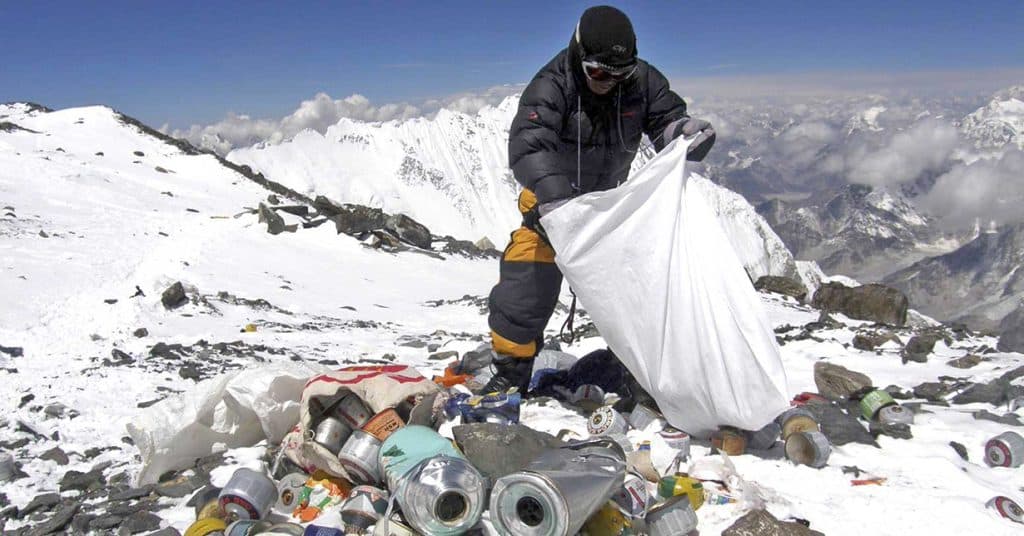Challenges Mount as the Majestic Himalayas Face Increasing Environmental Pressures

I grew up in Kathmandu, Nepal, surrounded by the majestic Himalayas, but returning to my hometown now often leaves me disappointed. Severe air pollution has created a persistent haze that obscures the breathtaking mountain views, even during traditionally clear seasons. This troubling trend has significant implications for tourism and local businesses that rely on the natural beauty of the region.
Haze Obscures Iconic Views
The haze that blankets Kathmandu and its surroundings has become a common sight, particularly during the spring and autumn months, which were once known for their clear skies. On a recent visit, my flight had to circle the airport multiple times due to poor visibility caused by the haze. Even at a hotel known for its panoramic views, the mountains remained hidden throughout my two-week stay. Popular vantage points like Nagarkot, which used to offer stunning sunrises and sunsets, now often provide only a view of thick haze. Yogendra Shakya, a hotel operator in Nagarkot, has had to rebrand his business, shifting the focus from mountain views to the region’s history and culture due to the diminishing visibility of the Himalayas.
Scientists attribute the increasing haze to a combination of pollutants, including dust and smoke from fires, which significantly reduce visibility. The dry season, which is now longer due to climate change, traps these pollutants in the atmosphere. Traditionally, the best times for tourism were from March to May and October to November, but rising temperatures and worsening air quality have altered this pattern, leading to thick haze even in spring.
Impact on Tourism and Local Businesses
The haze has had a profound effect on the local tourism industry, with reports indicating a 40% decrease in business for trekking guides like Lucky Chhetri. She recounted a situation where her team had to compensate trekkers because they could not see the Himalayas due to the haze. Tourists, including frequent visitors like Australian traveler John Carrol, express disappointment over the lack of visibility, noting that conditions have worsened significantly over the past decade. Krishna KC, chair of the Trekking Agents Association of Nepal, highlighted the despair among trekking operators, many of whom are contemplating leaving the industry due to the lack of mountain sightings.
On the Indian side of the Himalayas, hoteliers and tour operators are also noticing a quicker return of haze and denser conditions than in the past. Malika Virdi, who runs a community tourism business in Uttarakhand, mentioned that while tourists remain hopeful and often return for another chance to see the mountains, the persistent haze is a growing concern.
Increasing Air Pollution and Health Concerns
South Asian cities frequently rank among the most polluted in the world, and the health implications are severe. Toxic air quality leads to travel disruptions and school closures, with major contributors to pollution including vehicle emissions, industrial discharges, and construction dust. The situation is exacerbated by forest fires and the burning of agricultural waste, which have become more common due to extended dry seasons.
Dr. Someshwor Das from the South Asia Meteorological Association noted that hazes and dust storms are on the rise, a trend expected to continue due to climate change. In 2024, the number of hazy days recorded at Pokhara Airport in Nepal reached 168, a stark increase from just 23 days in 2020. This alarming trend indicates that the visibility of the Himalayas is becoming increasingly rare.
The Future of the Himalayas
Experts warn that the Himalayas may be among the most affected mountain ranges globally due to their location in a densely populated and polluted region. As haze continues to obscure these iconic peaks, the stunning views may become limited to photographs and postcards. Trekking guide Lucky Chhetri expressed the frustration of being unable to deliver the experiences that clients expect, stating, “We are left to do business with guilt when we are unable to show our clients the mountains that they pay us for.” The ongoing haze presents a significant challenge for the tourism industry, leaving many to wonder what the future holds for the majestic Himalayas.
Observer Voice is the one stop site for National, International news, Sports, Editor’s Choice, Art/culture contents, Quotes and much more. We also cover historical contents. Historical contents includes World History, Indian History, and what happened today. The website also covers Entertainment across the India and World.

